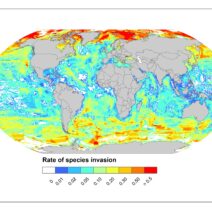The increasing threat of global warming has been a topic of concern for environmentalists and scientists alike, with its ramifications extending far beyond the atmospheric and oceanic changes we often hear about. One of the most grievous impacts is on the world’s forests, which serve not only as vital carbon sinks but also as irreplaceable ecosystems for countless species. The changing climate is leading to unprecedented challenges for these green sentinels, and understanding this paradigm is crucial in forging a path toward environmental stewardship.
At the heart of this issue lies the concept of sustainable forestry. Sustainable forestry practices encourage the maintenance of forest ecosystems while allowing for the harvesting of timber. However, global warming threatens these practices. The rise in temperatures is resulting in shifted climatic zones, which upends the delicate balance that sustains various tree species. As trees become unable to adapt, we risk losing entire forests, leading to a decrease in biodiversity and an increase in carbon emissions.
Forests serve as crucial carbon sinks, absorbing carbon dioxide and offering a buffer against climate change. Trees like oak, pine, and sequoia are particularly adept at carbon absorption. However, with rising temperatures and changing precipitation patterns, forests are becoming increasingly vulnerable. Higher temperatures can exacerbate the effects of drought, leading to tree stress and increased mortality rates. This creates a feedback loop, whereby the loss of trees further contributes to elevated carbon levels in the atmosphere.
The phenomenon of shifting biomes is an alarming consequence of climate change. As temperatures continue to rise, many native tree species are unable to thrive in their traditional habitats. For instance, boreal forests are at risk as warmer conditions allow for an invasion of pests such as the mountain pine beetle, which bore through trees that have become weakened by stress. Invasive species can decimate populations of indigenous trees, paving the way for a biodiversity crisis that threatens entire forest ecosystems.
Moreover, forests also play a critical role in soil preservation. Tree root systems help to anchor soil in place, reducing erosion and preventing landslides. The impact of global warming, particularly the alterations in precipitation patterns, can lead to intense rainfall or drought periods. The subsequent soil instability results in loss of arable land and biodiversity. The degradation of these soils can affect agricultural productivity, creating a cyclical issue that loops back to human food security.
Wildfires, exacerbated by rising temperatures and prolonged drought conditions, pose another significant threat to forests. In recent years, regions such as California and Australia have witnessed unprecedented fires resulting in the decimation of vast areas of woodland. The loss of trees not only releases stored carbon into the atmosphere but also hampers the forest’s ability to recover. As species die off, the entire ecological balance is thrown into disarray, threatening the multitude of organisms that rely on these habitats for survival.
Urban forests are not immune to the impacts of climate change either. Cities, often referred to as the ‘concrete jungles’, need trees to purify air, provide shade, and enhance overall urban aesthetics. However, as temperatures rise, urban heat islands are formed, causing additional stress on these trees. Furthermore, increased storm intensity can lead to further tree damage, while invasive species flourish in the altered microclimates of urban areas. The loss of trees in urban settings leads to decreased air quality, which can have dire consequences for public health.
Climate change is not merely a future threat; it is a current reality that demands immediate action. Reforestation and afforestation efforts can help mitigate the impact of climate change, but these initiatives must be carried out thoughtfully. Planting native species that are better adapted to the local climate is critical. Additionally, preserving existing forests is equally important. Forest conservation initiatives must be prioritized alongside efforts to combat global warming to ensure the longevity of our planet’s ecosystems.
Restoration ecology provides a hopeful avenue for reversing some of the damage inflicted by climate change. This burgeoning field seeks to rehabilitate degraded landscapes and restore ecological integrity. It relies on scientific research and historical data to understand how ecosystems function. Such studies illuminate the pathways for regenerating forests as vibrant and resilient entities capable of withstanding the ravaging impacts of climate change.
Public awareness and policy reform are also instrumental in combating the threats to forests. Encouraging sustainable practices in logging and promoting the importance of forests can foster a collective responsibility toward conservation. Policies must adequately support land management practices that integrate science, community engagement, and sustainability. This multifaceted approach can galvanize change and inspire collective action in the fight against climate change.
In conclusion, global warming represents a formidable challenge to our planet’s forests, threatening the very essence of these crucial ecosystems. As temperatures rise and precipitation patterns fluctuate, trees are facing unforeseen adversities that jeopardize their survival. From the loss of biodiversity to increased wildfire risks, the ramifications of climate upheaval on forests are complex and multifaceted. However, through concerted reforestation efforts, public policy reforms, and restoration ecology practices, it is conceivable that we can forge a sustainable path forward. Preserving and nurturing our forests is not merely an environmental concern—it is an imperative for future generations, human and non-human alike.






